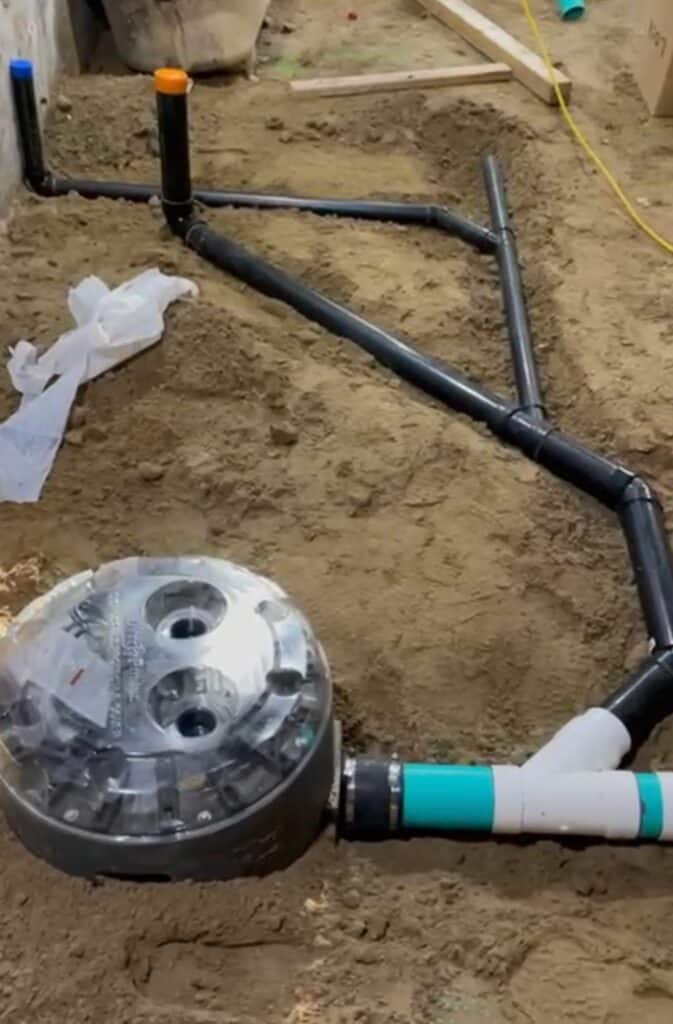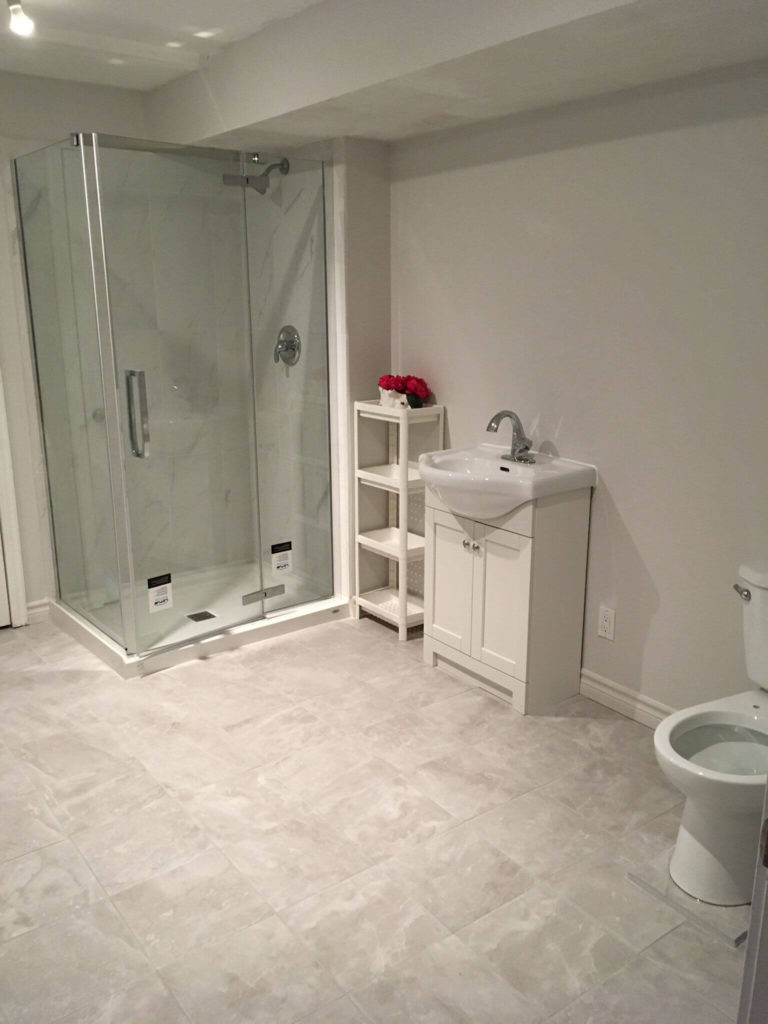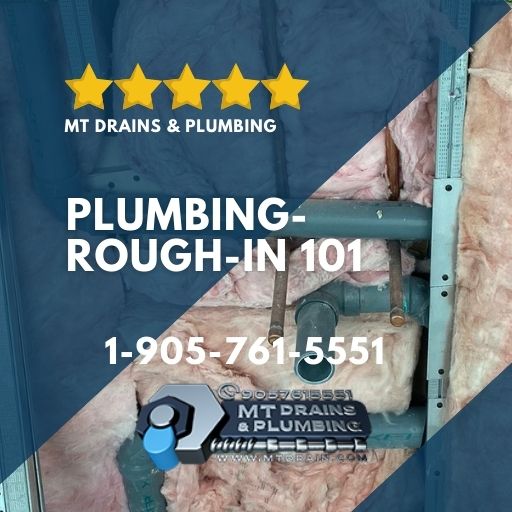To Request Rough-In Service in The GTA
Every plumbing installation in a household starts with the rough-in. This process is characterized by careful planning and professional plumbing line installation that connects the new construction with the regional waste and supply systems of the area. That’s why rough-in is an important component for every new construction project, be it commercial or residential.
If you’re still unsure about what plumbing rough-in means and how it works, you’ve landed on the right page. This article explains everything you need to know about the process, starting from the very basics. So, let’s dive right in.
Table of Contents
Defining the Rough-In Process
As previously mentioned, plumbing rough-in is a part of construction where the waste and supply lines for a home or building go into place. Rough-in plumbing requires you to thoroughly plan the location of the bathroom, kitchen, basement, or laundry room.
Successful rough-in plumbing means that all drain and water supply pipes are run through bored holes located in the studs and that all pipes are connected. During this phase, plumbers don’t install faucets, sinks, and other fixtures.

Waste lines are usually the first ones to be installed since the wastewater pipes are larger than the supply lines. The plumbers install the water supply piping right after laying in the waste lines.
For slab foundation households, the rough-in goes before the slab is poured.
The plumbers normally cover the drain lines to prevent debris from getting inside.
Plumbing Rough-In Testing
All rough-in installations are tested for pressure. It’s important to look for leaks in the system before moving on to the next stage. The test is usually done with pressure gauges and a tube that can be hooked to an air compressor.
If the test results show leaks, you can take a walk along the roughed-in pipes and listen for hissing sounds. If there is sound coming from any of the pipes, you can put a soap solution on its joint to verify the leak. The solution will start to bubble at the site of the leak. Simply repair the leak and continue with the rough-in pressure test again.
After an inspector verifies the integrity of the rough-in, the construction can continue.
Rough-In Plumbing Step by Step
There are four essential steps when it comes to roughing in your plumbing:
- Key Location Markup. First, it’s important to determine where the toilets will be fixed. This is done by taking measurements of the future location of the toilet.
- Cutting the Drain Hole. Once the flange is placed on top of the pre-measured mark, the marked area needs to be cut for the flange to fit inside.
- Installing the Drainpipe. The next step is drainpipe installation. The trap and vent assemblies go beneath the floor. The drain should be directed towards the main wastewater pipe.
- Installing the Supply Line. The last step in the rough-in process is installing the supply line, which is run through the floor or wall.
Benefits of Rough-Ins
Rough-in comes with plenty of benefits.
Firstly, it’s a budget-friendly investment. If you plan on renovating your basement but lack the funds for it, you can dedicate a smaller amount to the rough-in and continue with the project once you save more money. Rough-ins can be put on hold for years without harming the renovation process.

Secondly, adequate rough-ins improve the overall construction and installation quality. They prevent maintenance issues in the long run. They also help increase the service life of water-saving fixtures once they’re installed.
Finally, rough-ins are an investment for the future. Going back to the basement example, when you do a rough-in in this area, it creates a commitment to renovate the entire space. It gives you a constant reminder that you should work more to optimize your basement, ultimately increasing your home value in the future.
Rough-In Plumbing for Toilet
Most water outlets in bathrooms are located beneath the toilet. On some occasions, the rough-in is installed in the wall. Some people prefer this option since the water supply line is less noticeable.
Now, if you’re improving your toilet or installing a new one, you’ll want to put special focus on the plumbing rough-in. Imagine getting this new toilet for your home only to find out the dimensions don’t fit its designated space.
And if you think you can simply make the toilet fit, you can bump into more severe plumbing issues along the way. But to avoid problems, you want to measure the toilet rough-in right from Day 1.
The standard rough-in size for toilets is 12 inches for two- and one-piece toilets. However, you can find measurements ranging from 10 to 14 inches as well – most often in older households. You can replace toilet rough-ins and go from 14 to 12 inches, for example. But there will be a 2-inch gap between the wall and the toilet tank.
Even though there are plenty of DIY recipes for measuring the rough-in, it’s best to leave the task to professional plumbers in your area.
Rough-In Basement Bathroom
According to Statista, bathrooms are the second most-popular renovation project in Canadian households. This means that toilet rough-ins are some of the most in-demand services around, whether they’re needed for the above-grade or basement bathrooms.
Older homes don’t typically come with a rough-in. So, if your basement isn’t set up to host the necessary systems like plumbing or drain vents, you’ll need to add them.

The rough-in of a basement bathroom is an extensive job, but it can save homeowners a lot of money in the long term. Livable basements featuring bathrooms and kitchens add value to a home by providing additional living space. But unfinished or old bathrooms often need rough-ins, among other plumbing services (waterproofing, pipe renovation, etc.).
Much like for the toilet rough-in, the basement bathroom rough-in is about bringing the lines into the space to prepare them for connections with actual fixtures.
Schedule Professional Rough-In Services
Basement and toilet rough-ins are essential components of a well-functioning plumbing system in a household. With tons of DIY tutorials out there, many Canadians decide to take the task into their own hands. However, inexperienced homeowners risk damaging their plumbing system before they even get to the construction phase. That’s why it’s highly recommended to schedule professional plumbers to take care of the rough-in process.
MT Drains & Plumbing Toronto has technicians who have mastered this complicated skill to help ensure basement bathroom renovation and installation tasks run smoothly. Let the experts set the ground for your next project by contacting us via our website or scheduling a consultation.




